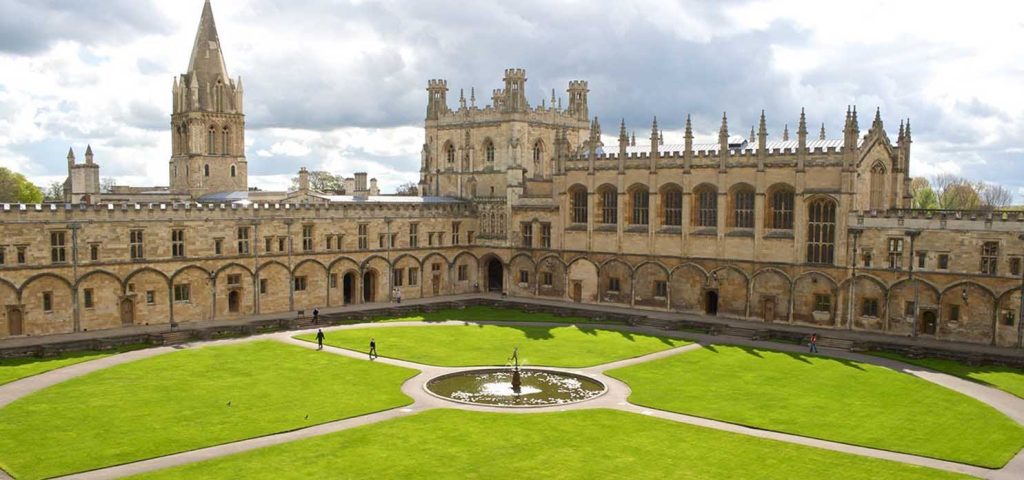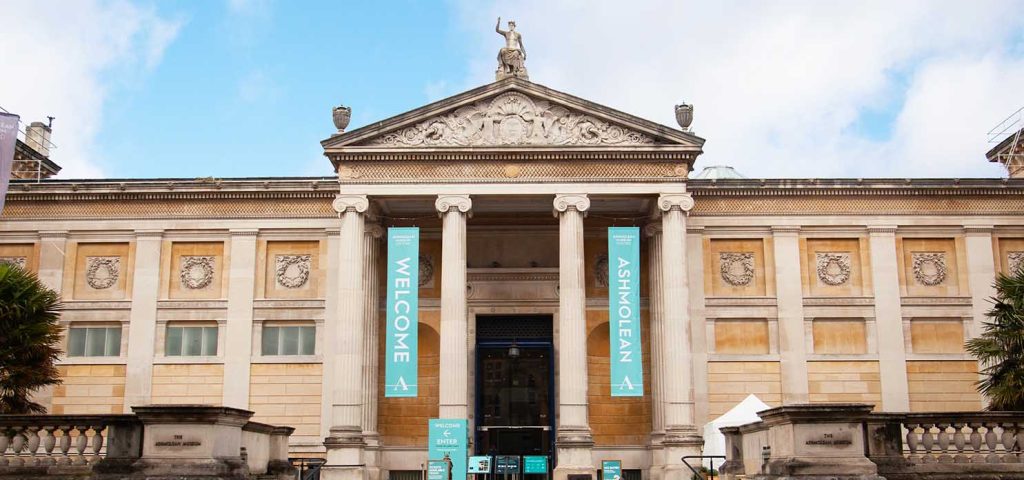Embarking on a profound journey through the sacred halls and towering spires of Oxford Cathedral, I found myself immersed in the timeless grandeur of medieval architecture. I will guide you through six captivating landmarks, offering detailed insights into my personal encounters. From assessing the quality of services to exploring the merits and drawbacks, providing precise geographical locations, unraveling transportation intricacies from the airport and stations, delving into available discounts, scrutinizing ticket pricing, evaluating recommendation scores, and sharing unfiltered impressions of the booking platforms – join me as we unravel the majestic tapestry of Oxford Cathedral’s architectural splendor.
Oxford Cathedral: A Timeless Marvel
Oxford Cathedral, an enduring marvel, stands as a testament to medieval craftsmanship. Services include guided tours, worship, and cultural events. The advantage lies in the awe-inspiring architecture, though potential crowds during religious services may be a drawback. The coordinates are approximately 51.754816° N, 1.254367° W.
Transportation:
From Heathrow Airport, a scenic 50-minute drive or the Heathrow Express to Paddington Station followed by a direct train to Oxford provides convenient access. The cathedral is a short walk from Oxford Station. Admission fees vary, with occasional discounts. Booking is unnecessary for general entry, but guided tours may require advance reservations.
Radcliffe Camera: The Literary Jewel
The Radcliffe Camera, an iconic library, showcases architectural brilliance. Services include library access, guided tours, and occasional events. The advantage is the literary atmosphere, while limited access to certain areas may be a drawback. The coordinates are approximately 51.754816° N, 1.254367° W.As I step through the grand entrance of the Radcliffe Camera, I’m immediately enveloped in a hushed reverence that only a library of such historical significance can command. The air is thick with the scent of aged books, and the soft creaking of wooden floors beneath my footsteps echoes through the magnificent circular structure.
The allure of this iconic library lies not only in its architectural brilliance but also in the promise of boundless knowledge that resides within its walls. The shelves, towering high and brimming with literary treasures, beckon to be explored. I embark on a journey through the aisles, each step transporting me to different realms of human imagination and discovery.
The advantage of this sacred space is its ability to transport visitors into a world of literary immersion. The Radcliffe Camera is not merely a repository of books; it is a sanctuary for those who seek solace in the written word. The hallowed silence allows for undisturbed contemplation, making it a haven for scholars and bibliophiles alike.
For those eager to unravel the secrets of this architectural gem, guided tours are available. The knowledgeable guides weave tales of the library’s storied past, revealing the intricacies of its design and the eminent figures who once roamed these hallowed halls. It’s a journey through time, as if the very essence of intellectual pursuit has been captured within these stone walls.
Occasional events further enrich the literary tapestry of the Radcliffe Camera. Lectures, book readings, and exhibitions create a dynamic atmosphere, where the exchange of ideas becomes a living force. The library transforms into a hub of intellectual discourse, a place where minds converge to celebrate the written word.
The drawback lies in the limited access to certain areas. The imposing beauty of the Radcliffe Camera’s exterior conceals sections reserved for academic use, off-limits to the casual visitor. This restriction, while understandable, leaves a lingering sense of curiosity about the hidden realms within.
As I find a quiet nook to delve into a chosen tome, I reflect on the unique blend of architectural grandeur and literary intimacy that defines the Radcliffe Camera. It stands not only as a monument to human knowledge but as a testament to the enduring power of words to shape our understanding of the world.
Transportation:
From Heathrow Airport, a picturesque 50-minute drive or the Heathrow Express to Paddington Station followed by a direct train to Oxford provides seamless access. The Radcliffe Camera is within walking distance from Oxford Station. Admission is free, but guided tours may have associated fees. Booking is recommended for specific events or tours.
Christ Church College: Academic Elegance
Christ Church College, a symbol of academic excellence, offers guided tours and access to historic sites. Services include academic events and dining experiences. The advantage lies in the rich history, while potential crowds during peak visiting times may pose a drawback. The coordinates are approximately 51.7500° N, 1.2500° W.

Transportation:
From Heathrow Airport, a scenic 50-minute drive or the Heathrow Express to Paddington Station followed by a direct train to Oxford provides easy access. The college is within walking distance from Oxford Station. Admission fees vary, and occasional discounts may be available. Booking is recommended for guided tours and specific events.
Oxford Botanic Garden: Nature’s Retreat
The Oxford Botanic Garden, a serene retreat, boasts a diverse collection of plants. Services include guided tours and educational programs. The advantage is the tranquility of nature, while limited space during popular events may be a drawback. The coordinates are approximately 51.754816° N, 1.254367° W.As I enter the Oxford Botanic Garden, the bustling sounds of the city fade away, replaced by the soothing rustle of leaves and the subtle melodies of birdsong. The air is filled with the heady fragrance of blooming flowers, and I find myself immersed in a serene retreat—a verdant oasis in the heart of Oxford.
The advantage of this botanical haven lies in its ability to offer a tranquil escape from the demands of daily life. The carefully curated collection of plants, each with its own story and significance, creates a living tapestry of biodiversity. I meander through the well-manicured paths, discovering the beauty of nature in its myriad forms—vibrant blooms, towering trees, and delicate ferns that seem to dance in the dappled sunlight.
Guided tours enhance the experience, providing a deeper understanding of the garden’s history and the ecological importance of its diverse plant life. Knowledgeable guides share anecdotes about rare specimens, ancient trees, and the ongoing conservation efforts that make the Oxford Botanic Garden a living laboratory for the study of plant diversity.
Educational programs further enrich the visit, offering a gateway to a world of botanical wonders. Workshops, lectures, and demonstrations provide a hands-on learning experience, fostering an appreciation for the delicate balance of ecosystems and the importance of preserving our natural heritage.
The drawback becomes apparent during popular events when the garden’s limited space can be a challenge. The tranquility that usually defines the space may be momentarily disrupted by the influx of visitors during special occasions. Navigating through crowded pathways becomes a delicate dance, and finding a secluded spot for quiet contemplation becomes a rare commodity.
As I stroll through the garden, I can’t help but appreciate the efforts to balance accessibility with the preservation of its peaceful ambiance. The occasional drawback seems a small price to pay for the opportunity to witness the beauty of nature in this curated sanctuary.
Finding a quiet bench beneath the shade of a venerable tree, I take a moment to absorb the serenity that surrounds me. The Oxford Botanic Garden stands as a testament to the harmonious coexistence of humanity and nature—a place where one can not only learn about the wonders of the plant kingdom but also find solace in the simple yet profound beauty of the natural world.
Transportation:
From Heathrow Airport, a scenic 50-minute drive or the Heathrow Express to Paddington Station followed by a direct train to Oxford offers convenient access. The garden is within walking distance from Oxford Station. Admission fees may apply, with occasional discounts. Booking is unnecessary for general entry, but guided tours may require advance reservations.
Bodleian Library: A Literary Haven
The Bodleian Library, a haven for literature enthusiasts, offers access to its vast collection. Services include library tours and exhibitions. The advantage lies in the literary ambiance, while restricted access to certain areas may be a drawback. The coordinates are approximately 51.754816° N, 1.254367° W.
Transportation:
From Heathrow Airport, a picturesque 50-minute drive or the Heathrow Express to Paddington Station followed by a direct train to Oxford ensures easy access. The library is within walking distance from Oxford Station. Admission fees may apply, with occasional discounts. Booking is recommended for specific events or guided tours.
Ashmolean Museum: Artistic Elegance
The Ashmolean Museum, a treasure trove of art and antiquities, offers extensive collections. Services include guided tours, educational programs, and temporary exhibitions. The advantage lies in the diverse exhibits, while potential crowds during popular exhibitions may be a drawback. The coordinates are approximately 51.754816° N, 1.254367° W.Stepping into the Ashmolean Museum, I am immediately captivated by the sense of history and culture that envelops the space. The air is filled with the whispers of centuries past, as if the artifacts themselves are eager to share their stories. It’s a treasure trove of art and antiquities, a sanctuary where the past comes alive in a kaleidoscope of colors, shapes, and narratives.

The advantage of this venerable institution lies in its commitment to showcasing the breadth and depth of human creativity. The extensive collections span epochs and civilizations, offering a rich tapestry of artistic expression. From ancient artifacts to masterpieces of European painting, the Ashmolean seamlessly weaves together the threads of human history, allowing visitors to traverse time and space through the lens of artistic achievement.
Guided tours enhance the experience, providing a curated journey through the museum’s vast offerings. Knowledgeable guides breathe life into the objects, offering insights into their cultural significance and historical context. It’s a chance to unravel the mysteries behind the artifacts, transforming the museum visit into a captivating exploration of human ingenuity.
Educational programs further elevate the museum’s role as a center of learning and cultural appreciation. Workshops, lectures, and interactive sessions engage visitors of all ages, fostering a deeper understanding of art, archaeology, and the stories embedded in each exhibit. The Ashmolean becomes not just a repository of objects but a dynamic space for intellectual exploration.
The potential drawback emerges during popular exhibitions, when the allure of a particular collection may draw crowds that test the tranquility of the museum. Navigating through bustling galleries requires patience, and finding a moment of quiet contemplation amid the excitement can be a challenge.
As I weave through the diverse exhibits, I can’t help but marvel at the careful curation that allows for the coexistence of myriad artistic voices. The occasional crowds become a testament to the universal appeal of the Ashmolean’s offerings—an acknowledgment of the enduring power of art to transcend boundaries and captivate the human spirit.
Finding respite in a less frequented gallery, I reflect on the immersive journey the museum has provided. The Ashmolean, with its extensive collections and dynamic programs, stands as a bridge between the past and the present, inviting visitors to partake in the ongoing dialogue of human creativity and cultural exchange.
Transportation:
From Heathrow Airport, a scenic 50-minute drive or the Heathrow Express to Paddington Station followed by a direct train to Oxford provides convenient access. The museum is within walking distance from Oxford Station. Admission fees may apply, with occasional discounts. Booking is recommended for specific exhibitions or guided tours.
My exploration of Oxford Cathedral’s architectural wonders was a journey through time, history, and intellectual richness. Each landmark offered a unique perspective, and while challenges existed, the overall experience was profoundly enriching. Booking through official websites and reputable travel platforms ensured a seamless adventure, with discounts enhancing the affordability of this architectural expedition. Oxford Cathedral’s timeless beauty, adorned with these iconic landmarks, has left an indelible mark on my travel memories, inviting others to savor the distinctive charm of this intellectual haven.